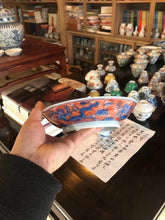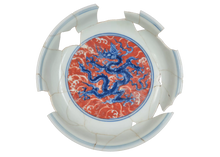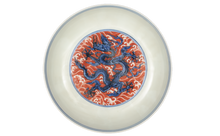
The production of Chinese porcelain developed to the Ming Dynasty. From the situation of "a hundred flowers competing for beauty" in the mouths of many kilns in the Tang and Song dynasties, after the transition of the Yuan Dynasty, it basically evolved into a situation where Jingdezhen kilns were "excellent with each other". Jingdezhen was known as the "gathering of wares from all over the world". "place. For more than 500 years in the Ming and Qing dynasties, most of the most refined and beautiful porcelain came from Jingdezhen. Especially Jingdezhen imperial kiln porcelain, which has long represented the highest level of porcelain production in China and the world. In the second year of Hongwu (1369), the imperial court set up a pottery factory in Jingdezhen (later renamed "Imperial Kiln Factory" and "Imperial Kiln Factory"). A curtain of imperial porcelain was specially fired for the palace. In view of this historical background, skilled craftsmen from all over the country have continuously gathered in Jingdezhen. With high standards, strict requirements, and continuous innovation, they have continuously fired a large number of rich varieties and superb quality porcelains for the palace. These porcelains are mainly used as royals. The daily diet, furnishings and play, sacrifices and rewards. The defective products produced by the kiln were broken and buried in the imperial ware factory. They were not known to the world for a long time. The kiln site has undergone many formal archaeological excavations and salvage excavations, and the number of imperial kiln porcelain pieces unearthed is in tons. After the archaeologists sorted out, put it together, and repaired it, a large number of Ming Dynasty imperial kiln porcelains were "revisited". The plate we shared today is a blue and white plate with alum and red seawater dragon pattern in Xuande, Ming Dynasty. It is a 1:1 hand-painted imitation. The website www.txs-tea.com has sales, open pan, shallow arc belly, and circle feet. Blue, white and red color decoration. The inner bottom is painted with sea water dragon pattern. There are fringe patterns on the lower edge of the outer mouth, and nine dragons on the abdomen, tumbling in the waves of the sea. White glaze is applied inside the circle foot, blue and white and red color are combined, the two colors reflect each other, contrast sharply, and complement each other. The red color is bright, and the color is divided into different shades to express the three-dimensional effect of the decoration. The coloring of blue and white is similar to ink painting, with variations in gradation, intensity, and depth. It can be lined, rendered, it can be delicate meticulous brushwork, or it can be free and easy freehand brushwork. It can be meticulous and dense, and rich in depth. . Therefore, red and blue complement each other. Blue and white make up for the insufficiency of the gradation change of red in glaze, while red in glaze enriches the color and charm of blue and white. When blue and white meets red in glaze, blue and white develops color at 1280℃. Red' develops color at 1325°C. After exploration, the craftsmen of Jingdezhen are constantly looking for the fire that belongs to the two pigments. Regardless of the rise and fall of the porcelain industry along with the change of dynasties, the blue and white glaze red has always attracted us with its unique artistic charm.



















